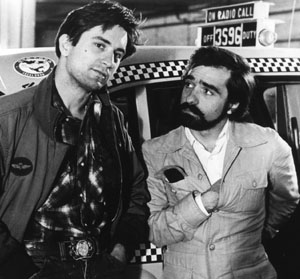Written By: Tina Dixon
Published: April 2011
Why I chose the article: I chose this particular article as I like films which involve Martin Scorsese, Robert De Niro or Leonardo DiCaprio. They're all recognised globally, and can be considered as 'stars'. The article focuses on these three but revolve around masculinity. It's interesting how arguments and comments are made involving this topic, and is interesting to have knowledge of; especially with this director/ two actors.
Key Points: The article contains a brief overview, "So here, I am going to look at Martin Scorsese’s collaborations with two male actors: Robert De Niro who has appeared in eight films so far, and Leonardo DiCaprio, who has appeared in four to date. I will argue that the switch in 2002 to working with DiCaprio marks an ideological shift in the representation of masculinity in Scorsese films."
The first part contains a short biography and background of Scorsese, where he grew up and how he became a film-maker. Scorsese is mentioned as "making films that concentrate on realistic characters" . The first film he made with De Niro was 'Mean Streets', in 1973.
 |
| De Niro and Scorsese, Taxi Driver (1976) |
The third section contains De Niro and the subject of masculinity. "But what De Niro carries with him is a very traditional masculinity, he is a man’s man". He in film, is the personification of traditional masculinity. As years go on, society changes and therefore ideologies change. "Despite De Niro’s brilliance, and however much Scorsese has enjoyed working with him, the world has changed. There have been cultural and social shifts in terms of ideologies around masculinity. It is hard to imagine De Niro in a Scorsese film where he portrays a more contemporary masculinity, a masculinity that is more fluid, less traditional and less hegemonic."
 |
| De Niro, Raging Bull (1980) |
The next section, being the shortest, contains a wider context of masculinity. Lynne Segal's book: Slow Motion: Changing Masculinities, Changing Men (1990) contains a suggestion regarding masculinity:"To be ‘masculine’ is not to be ‘feminine’, not to be ‘gay’, not to be tainted with any marks of inferiority". This is clearly the kind of masculinity we can see in De Niro’s role in Scorsese's films.
The last section, contains information on Leonardo DiCaprio, a background and information on the films he was cast in involving Scorsese. The writer of this article suggests that the reprsesntagtion of masculinity has changed over time, therefore the characters change as a result of that. The article ends with: "They can now be sensitive, vulnerable, slim, as personified by actors such as Johnny Depp, Jude Law, Ryan Philippe, Orlando Bloom and Leonardo DiCaprio. Clearly something has shifted socially and culturally for this to be the case".
 |
| DiCaprio, Shutter Island (2010) |

No comments:
Post a Comment
Note: only a member of this blog may post a comment.